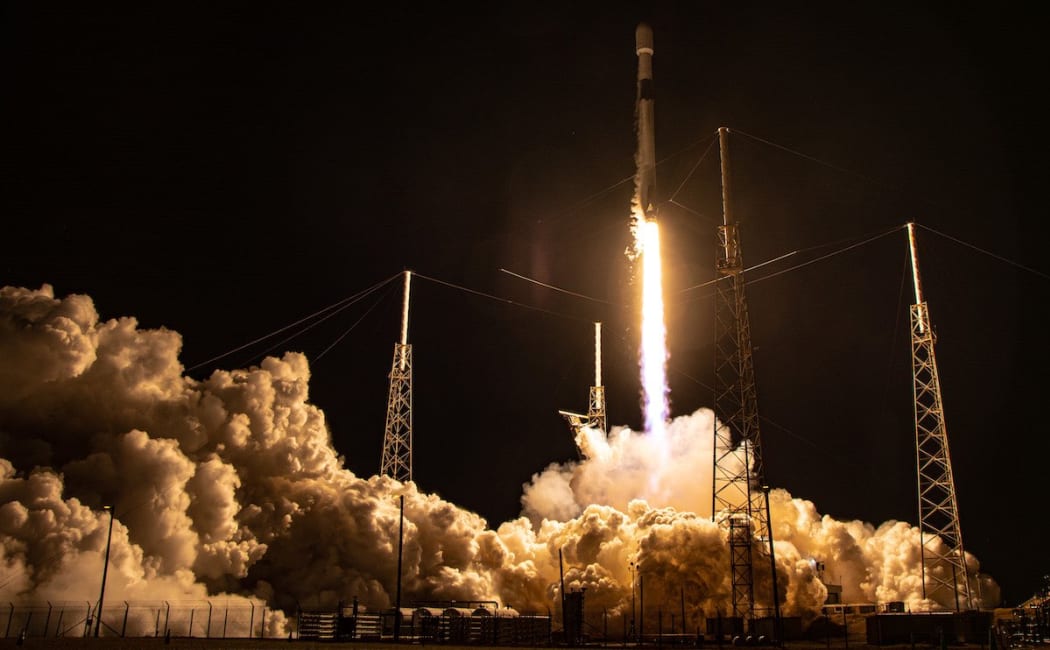SpaceX Achieves Milestone: 100th Falcon 9 Launch of 2025 Successfully Deploys Starlink Satellites

SpaceX Marks 100th Falcon 9 Launch of 2025 with Successful Starlink Deployment
Cape Canaveral, Florida – August 14, 2025: SpaceX has once again proven its dominance in space exploration and satellite deployment. The aerospace giant successfully launched 28 Starlink satellites into low-Earth orbit on Thursday morning, marking the company’s 100th Falcon 9 launch of 2025. The historic mission took place from Launch Complex 40 at the Cape Canaveral Space Force Station at exactly 8:29 AM EST.
A Record-Breaking Year for SpaceX
This launch not only celebrated the 100th Falcon 9 flight of the year but also highlighted SpaceX’s unmatched ability to conduct frequent, reliable, and reusable space missions. With this achievement, SpaceX continues to push the boundaries of modern rocketry and satellite communications.
Earlier in the week, SpaceX also completed another Starlink mission from Vandenberg Space Force Base in California, where a Falcon 9 rocket lifted off at 12:27 PM EDT carrying 24 Starlink V2 Mini satellites. These satellites are designed to enhance global internet connectivity, providing faster and more reliable broadband service across rural and underserved regions of the world.
About the Falcon 9 Rocket
The Falcon 9 rocket used in this week’s missions represents SpaceX’s commitment to reusability. The first-stage booster of the Falcon 9 had already completed nine successful flights before this mission, supporting previous Starlink deployments and other low-Earth orbit payloads. Once again, the booster executed a flawless landing on the autonomous droneship “Of Course I Still Love You”, stationed in the Pacific Ocean.
This successful recovery marked the 145th landing of a booster on a droneship and the 489th booster landing overall, proving the reliability and sustainability of SpaceX’s reusable rocket technology.
Starlink: Expanding Internet Connectivity
The Starlink satellite constellation is SpaceX’s ambitious project aimed at creating a network of satellites that delivers high-speed, low-latency internet worldwide. With over 1,786 satellites launched in 2025 alone, SpaceX has rapidly expanded its global coverage. The latest batch of Starlink V2 Mini satellites enhances capacity and performance, ensuring stronger connections and broader access in remote areas.
Starlink’s technology has already proven vital in regions affected by natural disasters, war zones, and rural communities where traditional infrastructure is limited. The addition of these 28 satellites further strengthens the network, bringing SpaceX closer to its goal of near-global internet availability.
The Second Stage and Deorbit Burn
After the Falcon 9 successfully separated from its first stage, the second stage continued into orbit with the Starlink payload. Following the deployment of the satellites, the second stage is scheduled for a controlled deorbit burn over the Pacific Ocean, east of New Zealand. This ensures minimal space debris and supports sustainable space operations.
100 Launches in 2025: A New Benchmark
Reaching the milestone of 100 Falcon 9 launches in a single year sets a new benchmark for commercial spaceflight. It demonstrates not only SpaceX’s rapid turnaround capabilities but also its growing dominance in the aerospace industry. No other private company has managed to achieve such a high frequency of successful launches in a calendar year.
With 72 Starlink missions completed in 2025 alone, SpaceX continues to strengthen its role as both a launch provider and a satellite operator. The company’s strategy of reusing rockets while expanding its satellite constellation is reshaping global communications and the economics of space travel.
What’s Next for SpaceX?
Looking ahead, SpaceX shows no signs of slowing down. The company is preparing for Starship missions, which are expected to revolutionize interplanetary travel and cargo delivery. Additionally, more Starlink launches are scheduled for the remainder of the year, which could push the total number of satellites in orbit past 6,000 units since the project began.
Elon Musk, CEO of SpaceX, has consistently stated that the company’s long-term mission is to make humanity a multi-planetary species. While Starlink generates revenue to fund these ambitions, the frequent and successful Falcon 9 launches prove that SpaceX is well on its way to achieving that dream.
Conclusion
The successful launch of 28 Starlink satellites during SpaceX’s 100th Falcon 9 mission of 2025 is a historic milestone in the evolution of commercial spaceflight. With reusable rocket technology, an expanding Starlink constellation, and ambitious future projects, SpaceX continues to redefine the possibilities of space exploration and global connectivity.
As of today, SpaceX stands as the undisputed leader in satellite launches, internet service innovation, and sustainable space operations. With every mission, the company takes another step closer to connecting the entire world—and eventually, the stars.
